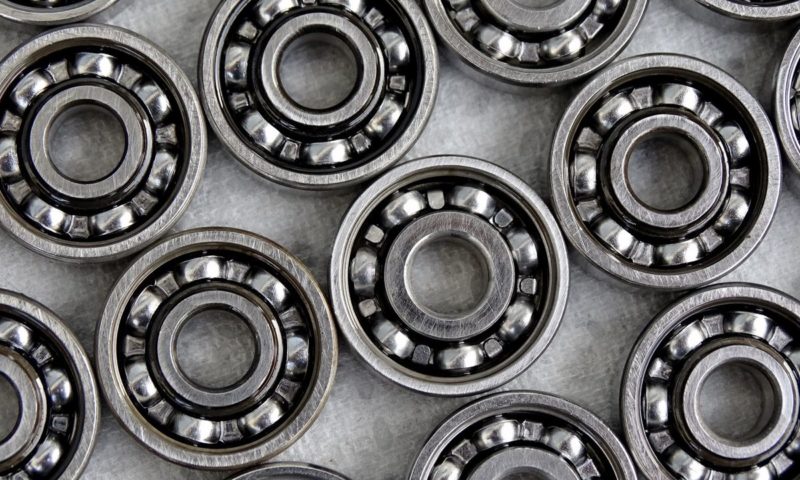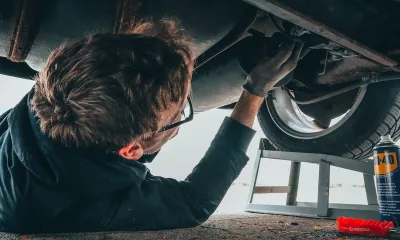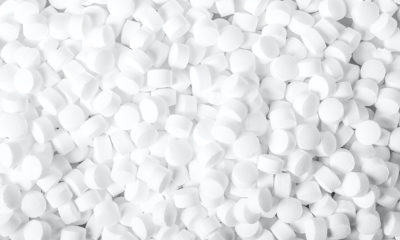
Motoring involves continuous movement between many mechanical components. This would be impossible without bearings.
Bearings do not get the recognition they deserve. Widely employed in the automotive industry, these high-precision parts are key to mobility as we know it. This fact was recognised during WW2 when, in 1943, the US air force flew off on the Schweinfurt–Regensburg mission to destroy the ball-bearing factories in Germany and so crippling the Nazis’ ability to produce military vehicles and aircraft. Here we look at the different types of roller bearings.
Why do we need bearings?

A bearing restricts relative movement, usually between two components, to one motion (rotation or oscillation) constrained to fine tolerances, while reducing friction, heat build-up and wear. It allows the load to be transferred between components, even at high speeds. A common use is in rotating machinery employing a shaft such as a wheel where the hub bearings allow the wheels to rotate. Without roller bearings, the spinning hub would wear on the contact area of the shaft. The heat generated by the friction may result in the metal parts fusing.
Hydrodynamic journal bearings
Have you ever been to the Museum of Natural History in Pretoria? Outside is a large marble ball in a socket of rock that can magically rotate with little resistance. The secret is water supplied under pressure in the socket that forms a thin film suspending the ball. This beautifully illustrates the principle of a hydrodynamic journal bearing as found on the crankshaft of most engines. The exaggerated figure below depicts the self-centring behaviour of a shaft in a hydrodynamic bearing. As the shaft moves closer to the bearing shell, the convergence of the gap leads to a rise in oil pressure that pushes the shaft away and prevents metal-on-metal contact.

It is important clean engine oil is supplied under sufficient pressure to sustain the condition of lubrication. When the oil boundary layer breaks down, the shaft comes into contact with the bearing shell, leading to wear. The alloy shell sustains the most damage as the material is softer than the crank journal but prolonged friction leads to terminal bearing and crank damage. This is termed “bearing knock” in the automotive industry.
A way to fix a damaged crank journal is to undercut it and fit undersized bearing shells in the block in case of a main bearing issue. If no undersized bearing shells are available, crank journals can sometimes be welded up and then ground down to the original dimensions.
Roller bearing components

Rings
The inner and outer metal rings can move relative to each other. In the case of the ball bearing shown, the relative movement is circular, with the inner and outer rings rotating in concentric circles. If the inner ring is fixed on a shaft and the outer ring connected to a wheel, the wheel can turn with low resistance.
The pressure (load) on the rings induced by the rolling elements can create wear and fatigue in the ring material, and for this reason, the steel is hardened and contains around 1% carbon and 1,5% chromium. Therefore, care must be taken when installing bearings where interference fits are specified, as excessive force can easily crack the brittle rings.
Rolling elements


Sliding friction between two metal surfaces is dramatically reduced when rolling elements are introduced, as depicted in diagram 2. This is the basic principle of a roller bearing employing rolling elements to achieve the same. These elements can be divided into two categories: ball or cylindrical. The main difference lies in the contact area as balls make point contact on the surface while cylinders result in line contact (diagram 3).
With the increase in load (pressure), the point contact of the ball becomes elliptical and the line contact of the cylinder turns rectangular. The larger contact area of the cylinder enables these bearings to carry higher loads but its maximum rotational speed is lower than the equivalent-size ball bearing. Most roller bearings use steel rolling elements but ceramic (silicon nitride) options are becoming popular as they offer even less friction and are more durable in certain applications. These bearings are referred to as hybrid bearings.
Cage
The main purpose of the bearing cage is to separate the rolling elements evenly around a bearing. This reduces friction and heat build-up while guiding the elements along the optimal path between the rings. In bearings where the outer or inner ring can be removed during installation, it helps to retain the elements and prevent them from getting lost. The cage also allows lubricant to enter the bearing. Common materials used for producing cages include metal and polymers.
Seals
The purpose of a bearing seal is to hold the lubricant inside the bearing while keeping contaminants out. There are both non-contact and contact seals. These contact seals make positive contact on the moving surface of either the inner and outer ring, adding to the friction, but is able to keep moisture out and prolong service life in harsh environments.
Bearing tolerances
Bearings are manufactured to tight tolerances down to a thousandth of a millimetre depending on the bearing size and type. A term called “internal clearance” points to the relative movement of the outer to the inner ring. Interestingly, the internal clearance may be greater than the operational clearance specified for the bearing. This is because the interference fit locating the bearing either expands the inner ring or compresses the outer ring (or both), thereby reducing the internal clearance. The operating heat may also lead to thermal expansion that, in turn, can influence the internal-clearance dimension.
Types of bearings


Load is a big factor
There are many types of roller bearings to suit a multitude of applications and most bearing suppliers propose an in-depth selection process considering all parameters. The main reason for these different types of bearings is the variance in load requirements. There can be pure axial or radial loads or a combination of the two (diagrams four and five). This influences the required bearing type (rolling element) and contact angle formed between the rolling elements and inner and outer rings.
The right bearing for the right application

Most common roller bearings
– Deep-groove ball bearing

This is the most widely used bearing, as it offers a cost-effective solution for a wide range of applications. The deep groove in the rings form the track for the ball elements and allows it to support radial and axial loads (to a degree) in both directions.
– Angular-contact ball bearing

Similar to the deep-groove ball bearing but the angular contact on the ball allows the bearing to support much higher axial loads, albeit only in one direction. A double angular ball bearing (back to back) can support high axial loads in both directions.
– Cylindrical roller bearing

For increased radial loads, a cylindrical roller bearing is recommended. Unfortunately, the speed rating is generally lower than with ball bearings and axial loads cannot be supported.
– Needle roller bearing

When there are space constraints, the rolling elements of a cylindrical bearing can be reduced in size, hence its name “needle”. Motorcycles tend to use needle bearings at the pivot point of the rear swingarm.
– Tapered roller bearing

To allow a cylindrical roller bearing to support axial loads, a contact angle is introduced between the rings and rolling elements. This type of bearing is commonly used in the wheel-hub assemblies of vehicles.
– Spherical roller bearing

This type of bearing can support high radial loads and shaft bending as the inner ring twists slightly on the radius of the sphere.




